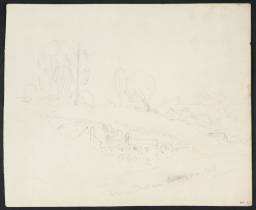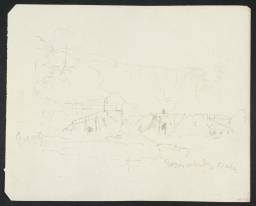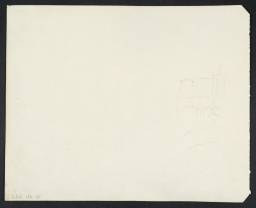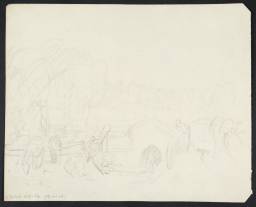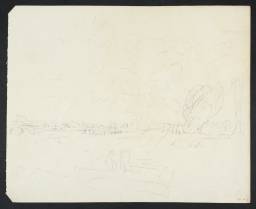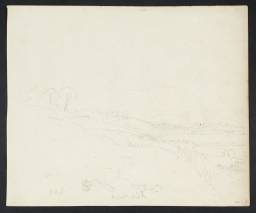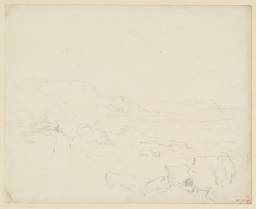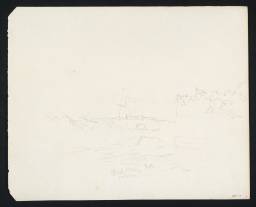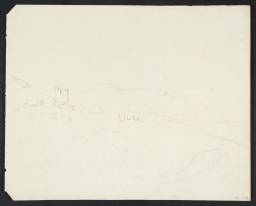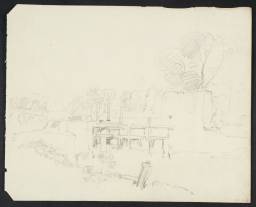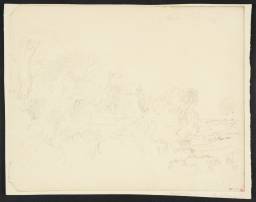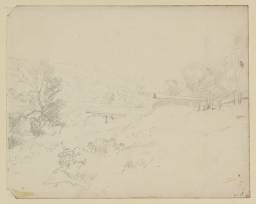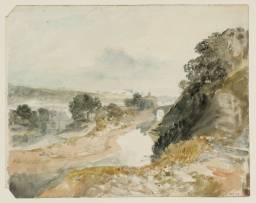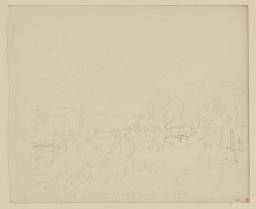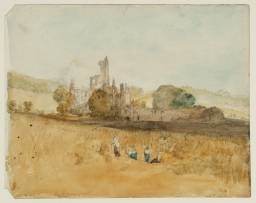Turner Bequest CLV
19 leaves of white wove paper without watermark, evidently the remains of a sketchbook. Finberg noted ‘part of one paper cover or fly-leaf of a sketchbook’, but this no longer present.
Approximate page size 186 x 227 mm
Approximate page size 186 x 227 mm
Accepted by the nation as part of the Turner Bequest 1856
References
These nineteen loose leaves evidently come from a long dismembered sketchbook, although there may be some grounds for excepting at least one, D12259; Turner Bequest CLV 18. Three main groups can be defined. In the order in which the leaves are numbered, the sequence opens with a few unidentified subjects followed by a group of sketches at Cassiobury Park near Watford, the seat of the Earl of Essex. The unidentified subjects may be along the Grand Union Canal between Brentford and Cassiobury. These are followed by a group of sketches around Whitehaven on the north-west coast of Cumbria. The sequence finishes with a group of sketches at Kirkstall Abbey on the western outskirts of Leeds, and one at Leathley near Farnley Hall, the Yorkshire home of Turner’s friend and patron, Walter Fawkes.
The Whitehaven sketches date the book quite precisely to 1809, since Turner is known to have visited Whitehaven that year as part of his tour of Cumbria and the western Lake District that also took him to Lowther Castle, near Penrith and Cockermouth Castle. An undated letter written by Turner from Cassiobury in which the artist says that he is ‘now upon the wing for Yorkshire for 2 months’1 might have been written at the outset of the tour represented here. It would explain both the Cassiobury and Yorkshire subjects.
Finberg dated the sketchbook 1816–22 on unknown grounds, but he appears to have assumed that the sketches were tending towards the watercolour of Kirkstall Lock on the River Aire (Tate D18145; Turner Bequest CCVIII L)2 which was engraved for the Rivers of England and published in 1827. In fact there is no direct connection with that watercolour, and the style of the drawings is very much earlier. Nor indeed is there any drawing actually of Kirkstall Lock in this group. This leaves the title slightly dislocated, but given that there are some Kirkstall subjects, it seems best to leave the title unchanged. Finberg’s dating, however, cannot stand: the Whitehaven drawings are datable to 1809, and there seems no reason not to assign all the drawings to the same year.
The pages are here presented in the same order as by Finberg. This echoes an earlier numeration inscribed in red ink, possibly by John Ruskin. However, many of the pages are inscribed on the verso in pencil with what appears to be an older, and probably original pagination, which is the exact reverse of Finberg’s. This is confirmed by the fact that the drawing on D12244; Turner Bequest CLV 4a is the continuation to the right of the drawing on D12242; Turner Bequest CLV 3, where these were successive pages (15 verso and 16 recto) of the original pagination as inscribed.
Technical notes
How to cite
David Hill, ‘Kirkstall Lock sketchbook 1809’, sketchbook, June 2009, in David Blayney Brown (ed.), J.M.W. Turner: Sketchbooks, Drawings and Watercolours, Tate Research Publication, December 2012, https://www

